 Search by Keyword
|
"HONEY PIE"
(John Lennon – Paul McCartney)
John Lennon had famously been of the opinion that Paul McCartney compositions such as “When I'm Sixty-Four,” “Your Mother Should Know” and “Ob-La-Di, Ob-La-Da” were “granny music.” So when Paul debuted a new song called “Honey Pie” at George Harrison's Esher home “Kinfauns” on May 29th, 1968 for consideration to be on the next Beatles album, John undoubtedly viewed this piece in the same way.
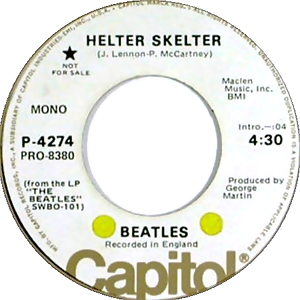 As four full months of recording for their astounding "White Album" progressed, John may have been very relieved to notice that Paul had not attempted to bring "Honey Pie" into the recording studio. He brought in newer creations, such as “Helter Skelter,” and even composed things on the spot with the group, such as “Birthday.” “Could he possibly maybe have forgotten about 'Honey Pie?,'” Lennon may have wondered hopefully. As four full months of recording for their astounding "White Album" progressed, John may have been very relieved to notice that Paul had not attempted to bring "Honey Pie" into the recording studio. He brought in newer creations, such as “Helter Skelter,” and even composed things on the spot with the group, such as “Birthday.” “Could he possibly maybe have forgotten about 'Honey Pie?,'” Lennon may have wondered hopefully.
This, of course, was not to be. In the final push to finish what became a full double-album, Paul ushered The Beatles into Trident Studios in London to start recording this delightfully campy piece of newly created nostalgia.
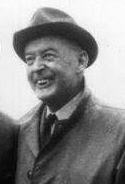
Jim McCartney, Paul's father
Songwriting History
“My dad's always played fruity old songs like that, you know, and I liked 'em,” Paul recalled in 1968. “I like the melody of old songs, and the lyrics actually as well. There's some old lyrics, like, you know – the woman singing about the man, and she's saying something about 'I wanna have his initials on my monogram.' You know what I mean? There's good lyrics and just good thoughts that you don't sort of hear so much these days, you know. And so, I would quite like to have been a 1920's writer, 'cause I like that thing...you know, up in a top hat and tails and sort of coming-on to 'em. So this kind of number, I like that thing...So this is just me doing it, pretending I'm living in 1925.”
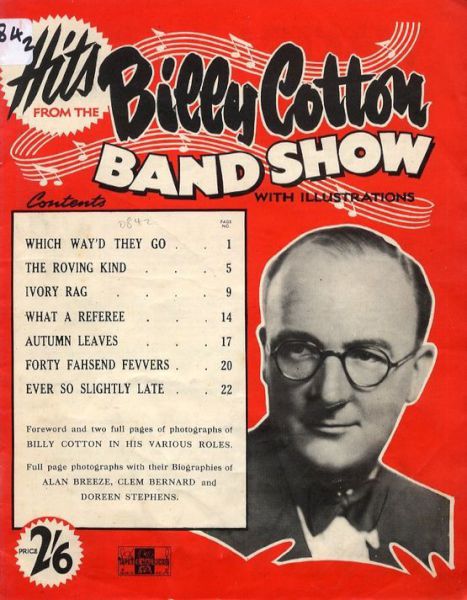 Paul elaborates further in his book “Many Years From Now”: Both John and I had a great love for music hall, what the Americans call vaudeville. I'd heard a lot of that kind of music growing up with The Billy Cotton Band Show and all of that on the radio. I was also an admirer of people like Fred Astaire; one of my favorites of his was 'Cheek to Cheek' from a film called 'Top Hat' that I used to have on an old 78. I very much liked that old crooner style, the strange fruity voice that they used, so 'Honey Pie' was me writing one of them to an imaginary woman, across the ocean, on the silver screen, who was called 'Honey Pie.' It's another of my fantasy songs. We put a sound on my voice to make it sound like a scratchy old record. So it's not a parody, it's a nod to the vaudeville tradition that I was raised on." Author Kevin Howlett, in his "Track By Track" section of the 50th Anniversary "White Album" box set, suggests that Paul may have been emulating the Marilyn Monroe character "Sugar Kane" in the movie "Some Like It Hot," which was a comedy portrayed in a 1929 setting. Paul elaborates further in his book “Many Years From Now”: Both John and I had a great love for music hall, what the Americans call vaudeville. I'd heard a lot of that kind of music growing up with The Billy Cotton Band Show and all of that on the radio. I was also an admirer of people like Fred Astaire; one of my favorites of his was 'Cheek to Cheek' from a film called 'Top Hat' that I used to have on an old 78. I very much liked that old crooner style, the strange fruity voice that they used, so 'Honey Pie' was me writing one of them to an imaginary woman, across the ocean, on the silver screen, who was called 'Honey Pie.' It's another of my fantasy songs. We put a sound on my voice to make it sound like a scratchy old record. So it's not a parody, it's a nod to the vaudeville tradition that I was raised on." Author Kevin Howlett, in his "Track By Track" section of the 50th Anniversary "White Album" box set, suggests that Paul may have been emulating the Marilyn Monroe character "Sugar Kane" in the movie "Some Like It Hot," which was a comedy portrayed in a 1929 setting.
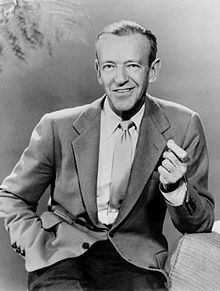 "Fred (Astaire) is a bit of an inspiration to me," Paul explained in his book "The Lyrics," adding, "sometimes, when I'm singing, I'll pretend to be him to get that 'little' voice. It helps me reach a very particular place...I was definitely thinking of Fred and the whole world of the silver screen when I was writing 'Honey Pie.' I fell in love not only with Fred but with all those other beautiful singers I'd heard throughout my childhood...'Honey Pie,' then, is a throwback to the 1930's or even the 1920's, the flapper era and Hollywood ('You became a legend of the silver screen'). "Fred (Astaire) is a bit of an inspiration to me," Paul explained in his book "The Lyrics," adding, "sometimes, when I'm singing, I'll pretend to be him to get that 'little' voice. It helps me reach a very particular place...I was definitely thinking of Fred and the whole world of the silver screen when I was writing 'Honey Pie.' I fell in love not only with Fred but with all those other beautiful singers I'd heard throughout my childhood...'Honey Pie,' then, is a throwback to the 1930's or even the 1920's, the flapper era and Hollywood ('You became a legend of the silver screen').
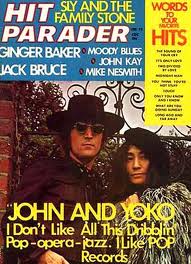 Although a high percentage of the songs that appear on the “White Album” were written during their stay in India in the spring of 1968, Paul never mentions this being one of them. Nor do the lyrics of “Honey Pie” appear to reflect their India experience at all. The song was, however, demoed on May 29th, 1968 at George's home in Esher with incomplete lyrics, which indicates that Paul undoubtedly began writing it upon his return home to London on March 26th. By October 1st of that year, when they began officially recording the song, all the lyrics were obviously in place, which brings the estimate to just over a six month period it might have taken Paul to write "Honey Pie." As for John contributing as collaborator, he simply stated that it was entirely written by Paul in his Hit Parader magazine interview in 1972. Nor was John involved in the writing of the experimental namesake piece "Wild Honey Pie," which appears to have begun life as an instrumental concocted during their stay in India. Although a high percentage of the songs that appear on the “White Album” were written during their stay in India in the spring of 1968, Paul never mentions this being one of them. Nor do the lyrics of “Honey Pie” appear to reflect their India experience at all. The song was, however, demoed on May 29th, 1968 at George's home in Esher with incomplete lyrics, which indicates that Paul undoubtedly began writing it upon his return home to London on March 26th. By October 1st of that year, when they began officially recording the song, all the lyrics were obviously in place, which brings the estimate to just over a six month period it might have taken Paul to write "Honey Pie." As for John contributing as collaborator, he simply stated that it was entirely written by Paul in his Hit Parader magazine interview in 1972. Nor was John involved in the writing of the experimental namesake piece "Wild Honey Pie," which appears to have begun life as an instrumental concocted during their stay in India.
Recording History
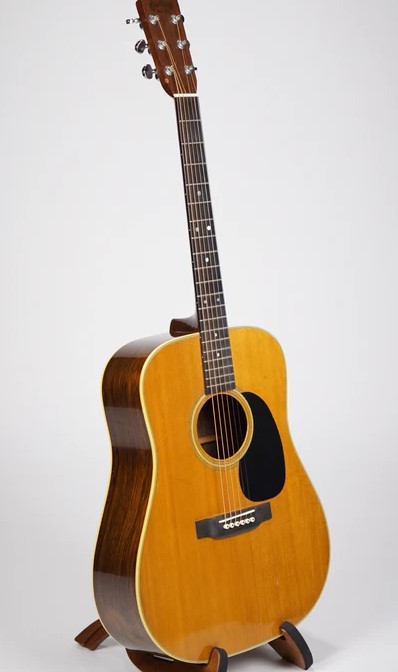 On May 29th, 1968, The Beatles met at George's “Kinfauns” bungalow in Esher, Surrey, the second of two consecutive days, to record demos for what would become the “White Album.” The demo for “Honey Pie,” recorded on this second day, consists of Paul on acoustic guitar and lead vocals, overdubbing himself on another acoustic guitar as well as various background vocal effects. Other elements on this demo include tambourine and percussive thumping (undoubtedly the back of an acoustic guitar) as well as other extraneous voices that can easily be attributed to the other three Beatles that were present on this day. On May 29th, 1968, The Beatles met at George's “Kinfauns” bungalow in Esher, Surrey, the second of two consecutive days, to record demos for what would become the “White Album.” The demo for “Honey Pie,” recorded on this second day, consists of Paul on acoustic guitar and lead vocals, overdubbing himself on another acoustic guitar as well as various background vocal effects. Other elements on this demo include tambourine and percussive thumping (undoubtedly the back of an acoustic guitar) as well as other extraneous voices that can easily be attributed to the other three Beatles that were present on this day.
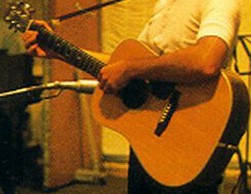 There are various lyric and arrangement differences on the demo, the most noticeable being the omission of the introductory section (“she was a working girl”) of the song. Verse one as we know it (“making me crazy”) never appears in the demo, the first verse here being what we know as the second verse (“position is tragic”). The official third verse is the second verse on the demo (“driving me frantic”) which is followed by the first bridge although he didn't quite have the lyrics nailed down yet (singing “la, da, da, da, dee, dee” at the end). Next Paul sings the “driving me frantic” verse and goes directly into a solo section, singing the melody line as “da, da, da.,” etc. This is followed by the second bridge which is ultimately the same as the released version but with the minor lyrical change “blew her boat away to sea” instead of “across the sea.” Then Paul repeats the “position is tragic” verse, followed by two solo verses sung with various overdubbed Paul vocals before it concludes suddenly. Interestingly, the version of this demo that appears on “Anthology 3” edits out the middle solo, second bridge and third verse, while the full demo appears on the 50th Anniversary "White Album" editions. There are various lyric and arrangement differences on the demo, the most noticeable being the omission of the introductory section (“she was a working girl”) of the song. Verse one as we know it (“making me crazy”) never appears in the demo, the first verse here being what we know as the second verse (“position is tragic”). The official third verse is the second verse on the demo (“driving me frantic”) which is followed by the first bridge although he didn't quite have the lyrics nailed down yet (singing “la, da, da, da, dee, dee” at the end). Next Paul sings the “driving me frantic” verse and goes directly into a solo section, singing the melody line as “da, da, da.,” etc. This is followed by the second bridge which is ultimately the same as the released version but with the minor lyrical change “blew her boat away to sea” instead of “across the sea.” Then Paul repeats the “position is tragic” verse, followed by two solo verses sung with various overdubbed Paul vocals before it concludes suddenly. Interestingly, the version of this demo that appears on “Anthology 3” edits out the middle solo, second bridge and third verse, while the full demo appears on the 50th Anniversary "White Album" editions.
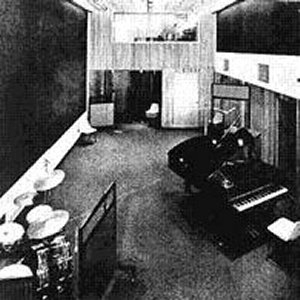 The Beatles entered London's Trident Studios on October 1st, 1968, for what became a week's worth of recording sessions at this facility. Trident Studios were used by the group earlier in these sessions (such as with the recording of the song “Hey Jude”) primarily to take advantage of their eight-track recording capabilities, something EMI had yet to institute. However, by this point, The Beatles did have access to eight-track recording at EMI so this week's work was either for a “change of scenery,” as Mark Lewisohn's book “The Beatles Recording Sessions” suggests, or because this week was already fully booked at EMI. In any event, they started the week off by recording the rhythm track for Paul's “Honey Pie” on this day, the session beginning at 4 pm. The Beatles entered London's Trident Studios on October 1st, 1968, for what became a week's worth of recording sessions at this facility. Trident Studios were used by the group earlier in these sessions (such as with the recording of the song “Hey Jude”) primarily to take advantage of their eight-track recording capabilities, something EMI had yet to institute. However, by this point, The Beatles did have access to eight-track recording at EMI so this week's work was either for a “change of scenery,” as Mark Lewisohn's book “The Beatles Recording Sessions” suggests, or because this week was already fully booked at EMI. In any event, they started the week off by recording the rhythm track for Paul's “Honey Pie” on this day, the session beginning at 4 pm.
 Two reels of tape were filled with rehearsals for the song, although the finished rhythm track on this day was deemed “take one.” This rhythm track consisted of Paul on piano, George on a Fender VI six-string bass, John on electric guitar and Ringo on drums, each of these instruments designated to an individual track of the eight-track tape, four open tracks being left for overdubbing. Once this was complete, George Martin, along with engineer Barry Sheffield, made a rough mono mix for himself so that he could write a score for brass and woodwinds for a future recording session. At 3:30 am the following morning, the session was over with work to be resumed later that day. Two reels of tape were filled with rehearsals for the song, although the finished rhythm track on this day was deemed “take one.” This rhythm track consisted of Paul on piano, George on a Fender VI six-string bass, John on electric guitar and Ringo on drums, each of these instruments designated to an individual track of the eight-track tape, four open tracks being left for overdubbing. Once this was complete, George Martin, along with engineer Barry Sheffield, made a rough mono mix for himself so that he could write a score for brass and woodwinds for a future recording session. At 3:30 am the following morning, the session was over with work to be resumed later that day.
 That day was October 2nd, 1968, also at Trident Studios and starting at 4 pm. The Beatles filled up three of the remaining four tracks of the eight-track tape with overdubs. Paul recorded his lead vocals onto track five, John played an electric guitar solo in the instrumental section of the song on track six, along with some authentic cymbal grabs from Ringo, and John then added a second electric guitar part heard during the introductory verse onto track eight. "John plays a brilliant solo on 'Honey Pie,'" George stated in 1987. "It sounded like Django Reinhardt or something. It was one of them where you just close your eyes and happen to hit all the right notes...sounded like a little jazz solo." This session was also complete at 3:30 am the following morning. That day was October 2nd, 1968, also at Trident Studios and starting at 4 pm. The Beatles filled up three of the remaining four tracks of the eight-track tape with overdubs. Paul recorded his lead vocals onto track five, John played an electric guitar solo in the instrumental section of the song on track six, along with some authentic cymbal grabs from Ringo, and John then added a second electric guitar part heard during the introductory verse onto track eight. "John plays a brilliant solo on 'Honey Pie,'" George stated in 1987. "It sounded like Django Reinhardt or something. It was one of them where you just close your eyes and happen to hit all the right notes...sounded like a little jazz solo." This session was also complete at 3:30 am the following morning.
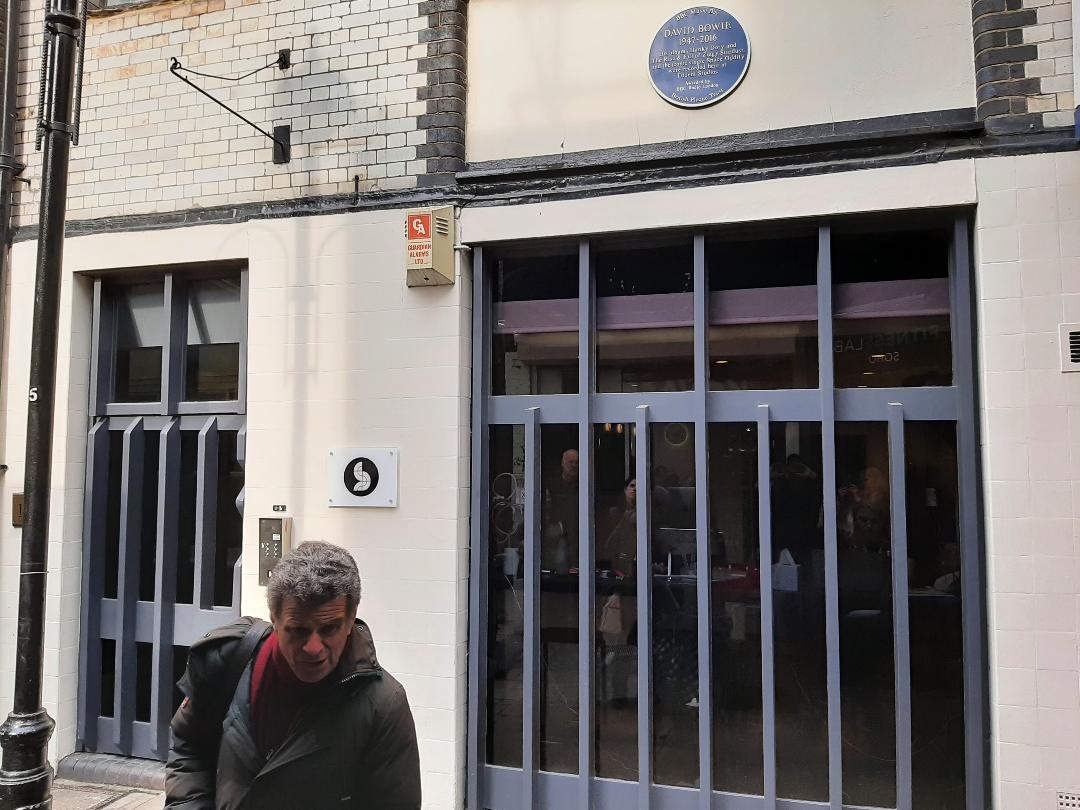 The Beatles decided to start work on George Harrison's composition “Savoy Truffle” for the next session on October 3rd, 1968, but resumed work on “Honey Pie” on October 4th, 1968 at Trident Studios, this session also beginning at 4 pm. A good portion of this session was taken up working on yet another new Paul track, namely “Martha My Dear,” Paul beginning the session with this song. At 6 pm, however, attention turned to “Honey Pie” as seven session musicians entered the studio to record the brass and woodwind arrangement that George Martin had recently prepared. By 9 pm this was complete, these musicians leaving to allow for fourteen other session musicians to enter for recording brass and strings for “Martha My Dear.” The Beatles decided to start work on George Harrison's composition “Savoy Truffle” for the next session on October 3rd, 1968, but resumed work on “Honey Pie” on October 4th, 1968 at Trident Studios, this session also beginning at 4 pm. A good portion of this session was taken up working on yet another new Paul track, namely “Martha My Dear,” Paul beginning the session with this song. At 6 pm, however, attention turned to “Honey Pie” as seven session musicians entered the studio to record the brass and woodwind arrangement that George Martin had recently prepared. By 9 pm this was complete, these musicians leaving to allow for fourteen other session musicians to enter for recording brass and strings for “Martha My Dear.”
 Sometime after midnight, Paul turned his attention back to “Honey Pie.” “We put a sound on my voice to make it sound like a scratchy old record,” Paul explained in his book “Many Years From Now." about the overdub that was designated "78 vocal" on the original tape box. "The engineers used a lot of EQ technology to adjust the frequencies, which gives it that little trebly megaphone feel," Paul recalled in his book "The Lyrics." Sometime after midnight, Paul turned his attention back to “Honey Pie.” “We put a sound on my voice to make it sound like a scratchy old record,” Paul explained in his book “Many Years From Now." about the overdub that was designated "78 vocal" on the original tape box. "The engineers used a lot of EQ technology to adjust the frequencies, which gives it that little trebly megaphone feel," Paul recalled in his book "The Lyrics."
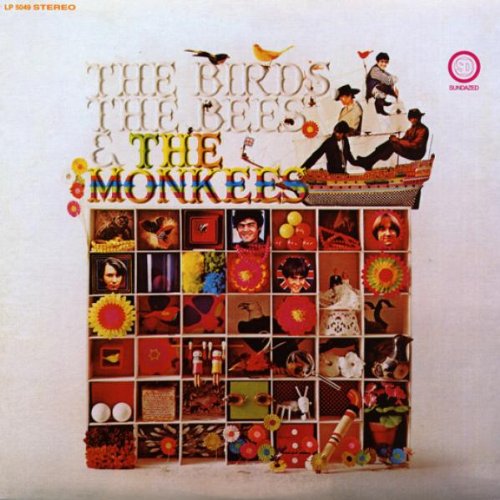 The book “The Beatles Recording Sessions” explains this “quaint touch" that was added to the last open track of the eight-track tape, track seven: "The vocal line 'now she's hit the big time!'...was heavily limited, chopping off the signals at both ends of the frequency range, and superimposed with the sound of a scratchy old phonograph, to make the end product like a vocal from a very early and worn 78 rpm record.” While this sounds like a very inventive idea, a Michael Nesmith track entitled “Magnolia Simms,” from the album “The Birds The Bees And The Monkees,” utilized this same trick throughout the entire song, even including a simulated record-skipping effect. This April 1968 released album predated this Beatles session by over five months and, since The Beatles were big fans of The Monkees and had recently met them and become friends, this Monkees track may have possibly influenced Paul or George Martin to experiment with the same effect. The book “The Beatles Recording Sessions” explains this “quaint touch" that was added to the last open track of the eight-track tape, track seven: "The vocal line 'now she's hit the big time!'...was heavily limited, chopping off the signals at both ends of the frequency range, and superimposed with the sound of a scratchy old phonograph, to make the end product like a vocal from a very early and worn 78 rpm record.” While this sounds like a very inventive idea, a Michael Nesmith track entitled “Magnolia Simms,” from the album “The Birds The Bees And The Monkees,” utilized this same trick throughout the entire song, even including a simulated record-skipping effect. This April 1968 released album predated this Beatles session by over five months and, since The Beatles were big fans of The Monkees and had recently met them and become friends, this Monkees track may have possibly influenced Paul or George Martin to experiment with the same effect.
 At any rate, “Honey Pie” was completed at this session, which finally ended at 4:30 am the following morning. Both the mono and stereo mixes of the song were done later that evening, October 5th, 1968, at Trident Studios by George Martin and engineer Barry Sheffield. After overdubs for “Savoy Truffle” and “Martha My Dear” were recorded, only one attempt was needed for each of the mono and stereo mixes of “Honey Pie.” John's lead guitar break in the solo section of the song is heard more fully on the mono mix, while the stereo mix fades it down noticeably after the first four measures. Tape copies of both the mono and stereo mixes of the song were made on October 7th, 1968 in the control room of EMI Studio Two, undoubtedly to create uniform sounding mixes for use on the finished album, the majority of which was recorded at EMI Studios. At any rate, “Honey Pie” was completed at this session, which finally ended at 4:30 am the following morning. Both the mono and stereo mixes of the song were done later that evening, October 5th, 1968, at Trident Studios by George Martin and engineer Barry Sheffield. After overdubs for “Savoy Truffle” and “Martha My Dear” were recorded, only one attempt was needed for each of the mono and stereo mixes of “Honey Pie.” John's lead guitar break in the solo section of the song is heard more fully on the mono mix, while the stereo mix fades it down noticeably after the first four measures. Tape copies of both the mono and stereo mixes of the song were made on October 7th, 1968 in the control room of EMI Studio Two, undoubtedly to create uniform sounding mixes for use on the finished album, the majority of which was recorded at EMI Studios.
 George Martin's son Giles Martin, along with engineer Sam Okell, returned to the master tapes sometime in 2018 to create a vibrant new stereo mix of "Honey Pie" for inclusion on the various 50th Anniversary editions of the "White Album" that were released that year. They also created a stereo mix of the Esher demo they recorded on May 29th, 1968 as well as an interesting instrumental mix of the October Trident recording, made simply by fading out both vocal tracks. George Martin's son Giles Martin, along with engineer Sam Okell, returned to the master tapes sometime in 2018 to create a vibrant new stereo mix of "Honey Pie" for inclusion on the various 50th Anniversary editions of the "White Album" that were released that year. They also created a stereo mix of the Esher demo they recorded on May 29th, 1968 as well as an interesting instrumental mix of the October Trident recording, made simply by fading out both vocal tracks.
Song Structure and Style
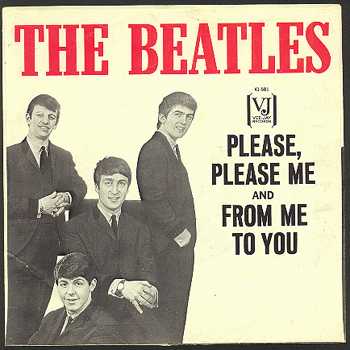 The structure of “Honey Pie” is quite similar to a large percentage of the early Beatles catalog, following a basic 'verse/ verse/ bridge/ verse' format (“Please Please Me” being a prime example). This foundation is built upon, however, with a separate introduction that is not heard elsewhere in the song, this being reminiscent of early 20th century songwriting (such as with “Let Me Call You Sweetheart”). The Beatles used this approach themselves before this time, such as with “Do You Want To Know A Secret” and “Here, There And Everywhere.” The final structure for “Honey Pie” then becomes 'intro/ verse/ verse/ bridge/ verse/ verse (instrumental)/ verse (instrumental)/ bridge/ verse/ verse (instrumental)' (or abbcbbbcbb). The structure of “Honey Pie” is quite similar to a large percentage of the early Beatles catalog, following a basic 'verse/ verse/ bridge/ verse' format (“Please Please Me” being a prime example). This foundation is built upon, however, with a separate introduction that is not heard elsewhere in the song, this being reminiscent of early 20th century songwriting (such as with “Let Me Call You Sweetheart”). The Beatles used this approach themselves before this time, such as with “Do You Want To Know A Secret” and “Here, There And Everywhere.” The final structure for “Honey Pie” then becomes 'intro/ verse/ verse/ bridge/ verse/ verse (instrumental)/ verse (instrumental)/ bridge/ verse/ verse (instrumental)' (or abbcbbbcbb).
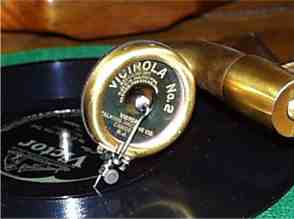 While the introduction is purposely labored for dramatic effect, it can still be parsed out to be twelve measures in length. It consists of Paul playing piano from the rhythm track with overdubbed lead vocals, and John playing simple lead guitar flourishes. Measures five and six incorporate the above mentioned scratchy record effect along with Paul's flat vocal (“now she's hit the big time”) to simulate an old 78 rpm platter on a Victrola. Easy evidence of the vocals being overdubbed and not being performed during the piano playing is heard in measures nine and ten during the lines “and if she could only hear me,” which are noticeably off in timing. John's quiet guitar passages are heard in the open spaces between vocal lines in measures two, four, six, eight and twelve, the final one incorporating an anticipatory segue into the first verse that follows. The final measure of the introduction concludes with a descending piano line that takes us perfectly into the body of the song. While the introduction is purposely labored for dramatic effect, it can still be parsed out to be twelve measures in length. It consists of Paul playing piano from the rhythm track with overdubbed lead vocals, and John playing simple lead guitar flourishes. Measures five and six incorporate the above mentioned scratchy record effect along with Paul's flat vocal (“now she's hit the big time”) to simulate an old 78 rpm platter on a Victrola. Easy evidence of the vocals being overdubbed and not being performed during the piano playing is heard in measures nine and ten during the lines “and if she could only hear me,” which are noticeably off in timing. John's quiet guitar passages are heard in the open spaces between vocal lines in measures two, four, six, eight and twelve, the final one incorporating an anticipatory segue into the first verse that follows. The final measure of the introduction concludes with a descending piano line that takes us perfectly into the body of the song.
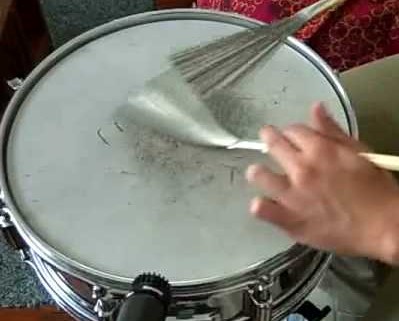 The first verse then appears which, like all the verses that follow, is eight measures in length. The full instrumentation of the rhythm track comes in immediately, consisting of piano, guitar, bass and drums played by all four Beatles, as well as Paul's overdubbed single-tracked lead vocals. Ringo appears to be playing lightly with brushes throughout the song while George thumps with staccato bass notes and John strums electric guitar appropriately for the nostalgic feel of the song. George Martin's clarinet and saxophone score is first heard in the seventh and eighth measures. This verse goes directly into the second verse, which has the exact same instrumentation but with the clarinets and saxophones playing throughout all of the measures, ending with a descending line juxtaposed nicely with the chord pattern that moves us into the bridge. The first verse then appears which, like all the verses that follow, is eight measures in length. The full instrumentation of the rhythm track comes in immediately, consisting of piano, guitar, bass and drums played by all four Beatles, as well as Paul's overdubbed single-tracked lead vocals. Ringo appears to be playing lightly with brushes throughout the song while George thumps with staccato bass notes and John strums electric guitar appropriately for the nostalgic feel of the song. George Martin's clarinet and saxophone score is first heard in the seventh and eighth measures. This verse goes directly into the second verse, which has the exact same instrumentation but with the clarinets and saxophones playing throughout all of the measures, ending with a descending line juxtaposed nicely with the chord pattern that moves us into the bridge.
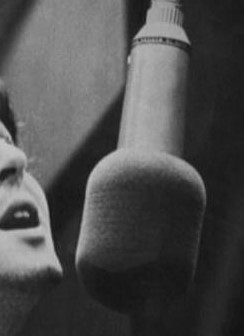 The bridge is also eight measures long and consists of the same instrumentation as the second verse. A straight 4/4 swing beat is heard here throughout the first seven measures as in the previous verses, the only deviation to this being the eighth measure of this bridge which has all instruments perform a three-note accent followed by two slight taps by Ringo on a closed hi-hat. This is followed by the third verse which is nearly the same instrumentally as the second verse, Paul segueing vocally into the following instrumental verse with the words “Honey pie, come back to me.” The bridge is also eight measures long and consists of the same instrumentation as the second verse. A straight 4/4 swing beat is heard here throughout the first seven measures as in the previous verses, the only deviation to this being the eighth measure of this bridge which has all instruments perform a three-note accent followed by two slight taps by Ringo on a closed hi-hat. This is followed by the third verse which is nearly the same instrumentally as the second verse, Paul segueing vocally into the following instrumental verse with the words “Honey pie, come back to me.”
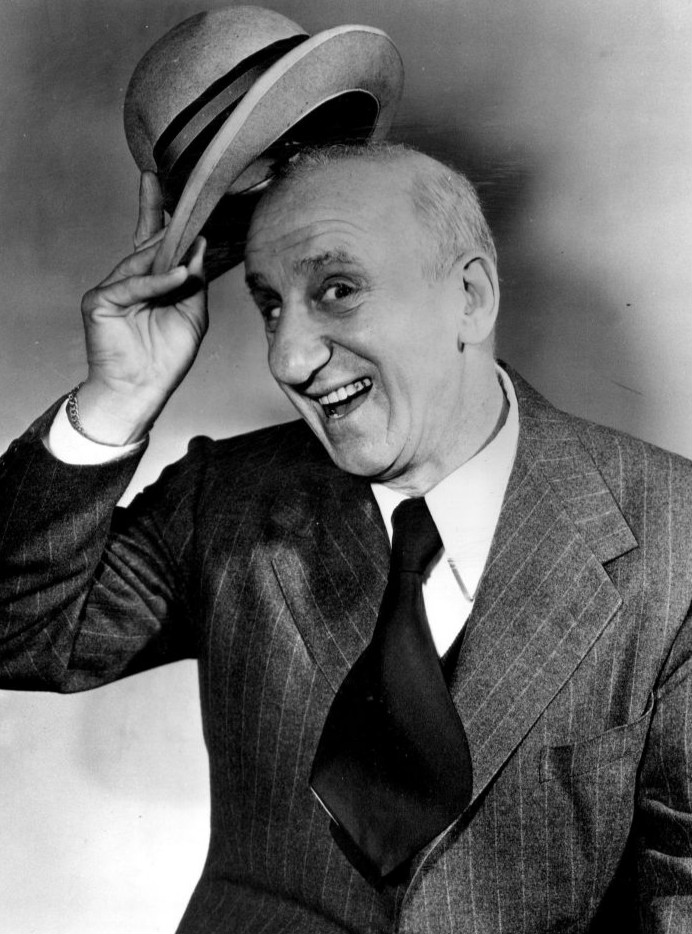 Two instrumental verses come next, the initial focus here being John's lead guitar, although all of the other instrumental elements are present as well. The clarinets and saxophones take a backseat in the arrangement for the first of these instrumental verses, playing only background chords to allow for John's guitar solo. However, Lennon's solo is primarily heard only in the first four measures (as well as the fifth through seventh in the mono mix), propelling Paul to pick up the slack a little in the seventh and eighth measure, singing “I like that, aah, ooh, aah” in a gruff whispered Jimmy Durante-like voice. Also noteworthy here are the third and fourth measures which both contain two accented beats performed by the instrumentalists, Ringo doing an overdubbed cymbal grab on every beat followed by two light taps on the closed hi-hat after each pair. These accented beats also occur in the eighth measure but without the cymbal grabs. Two instrumental verses come next, the initial focus here being John's lead guitar, although all of the other instrumental elements are present as well. The clarinets and saxophones take a backseat in the arrangement for the first of these instrumental verses, playing only background chords to allow for John's guitar solo. However, Lennon's solo is primarily heard only in the first four measures (as well as the fifth through seventh in the mono mix), propelling Paul to pick up the slack a little in the seventh and eighth measure, singing “I like that, aah, ooh, aah” in a gruff whispered Jimmy Durante-like voice. Also noteworthy here are the third and fourth measures which both contain two accented beats performed by the instrumentalists, Ringo doing an overdubbed cymbal grab on every beat followed by two light taps on the closed hi-hat after each pair. These accented beats also occur in the eighth measure but without the cymbal grabs.
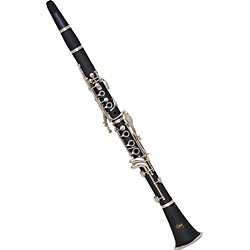 The second instrumental verse is similar, but shows the clarinets and saxophones taking more of a lead role since the guitar solo is limited only to the third and fourth measure this time. Paul also delivers the added element of ad-lib vocals with the lines: “I like this kind of hot kind of music, hot kind of music, play it to me, play it to me, hollywood blues.” The accents of the third and fourth measure are still present here as in the preceding verse, but the ending accents in the eighth measure are omitted, replaced instead by an impressive harmonized ascending and then descending clarinet score. The second instrumental verse is similar, but shows the clarinets and saxophones taking more of a lead role since the guitar solo is limited only to the third and fourth measure this time. Paul also delivers the added element of ad-lib vocals with the lines: “I like this kind of hot kind of music, hot kind of music, play it to me, play it to me, hollywood blues.” The accents of the third and fourth measure are still present here as in the preceding verse, but the ending accents in the eighth measure are omitted, replaced instead by an impressive harmonized ascending and then descending clarinet score.
The second bridge is then heard, which is similar to the first in most respects. John puts in double-guitar chops at the beginning of the first three measures here, however, for some reason, and then the fourth measure featurs yet another impressive harmonized clarinet riff. The three-note accent in the eighth measure is this time accompanied by Paul as he vocally adds “tee, tee, tee” into the fray.
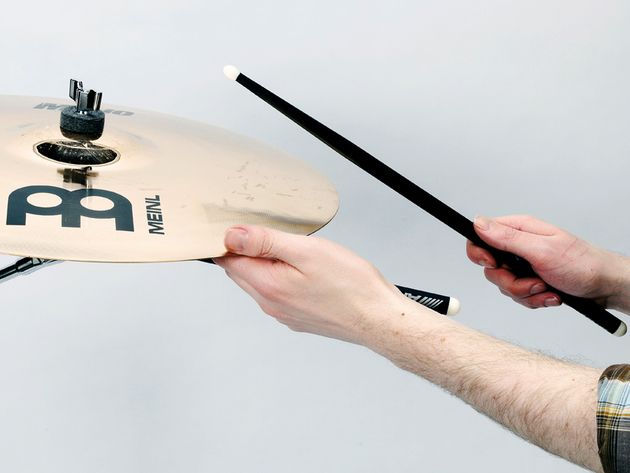 We are then treated to a repeat of the first verse lyrically but with all of the elements of the other verses. The seventh and eighth measures begin some more ad-lib vocalizing from Paul which continues through the final instrumental verse which comes next. This instrumental verse is essentially identical to the other instrumental verses heard earlier except for the clarinets and saxophones playing the verse melody line virtually throughout. The two sets of accented beats in the third and fourth measures do not feature the cymbal grabs as they did before, however, while the third set in the eighth measure pushes us into one final beat that suddenly ends the song. We are then treated to a repeat of the first verse lyrically but with all of the elements of the other verses. The seventh and eighth measures begin some more ad-lib vocalizing from Paul which continues through the final instrumental verse which comes next. This instrumental verse is essentially identical to the other instrumental verses heard earlier except for the clarinets and saxophones playing the verse melody line virtually throughout. The two sets of accented beats in the third and fourth measures do not feature the cymbal grabs as they did before, however, while the third set in the eighth measure pushes us into one final beat that suddenly ends the song.
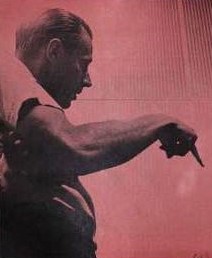 Although tensions were high within the group at this point, and John and George in particular weren't keen on doing songs like these, they all cooperated nicely and put in a suitable performance. Paul, of course, was game to make the song as authentic as possible and, with George Martin's help with the score, the definitive 1920's pastiche was achieved. Although tensions were high within the group at this point, and John and George in particular weren't keen on doing songs like these, they all cooperated nicely and put in a suitable performance. Paul, of course, was game to make the song as authentic as possible and, with George Martin's help with the score, the definitive 1920's pastiche was achieved.
American Releases
 “Honey Pie” has become a somewhat hidden gem, ending up as the second track of side four on their album “The Beatles,” popularly known as the “White Album,” which was released in the US on November 25th, 1968. It was released on compact disc for the first time on August 24th, 1987, then was re-released as a 30th Anniversary limited edition on November 23rd, 1998, then as a remastered CD on September 9th, 2009. Its original vinyl release in 1968 was only in stereo since mono albums were practically phased out in the US by that time. However, the vinyl album did finally get an individual mono vinyl release in America on September 9th, 2014, this set achieving a five star review in Rolling Stone magazine just after its release. A newly mixed stereo vinyl 50th Anniversary release on November 9th, 2018 was also admired by many. “Honey Pie” has become a somewhat hidden gem, ending up as the second track of side four on their album “The Beatles,” popularly known as the “White Album,” which was released in the US on November 25th, 1968. It was released on compact disc for the first time on August 24th, 1987, then was re-released as a 30th Anniversary limited edition on November 23rd, 1998, then as a remastered CD on September 9th, 2009. Its original vinyl release in 1968 was only in stereo since mono albums were practically phased out in the US by that time. However, the vinyl album did finally get an individual mono vinyl release in America on September 9th, 2014, this set achieving a five star review in Rolling Stone magazine just after its release. A newly mixed stereo vinyl 50th Anniversary release on November 9th, 2018 was also admired by many.
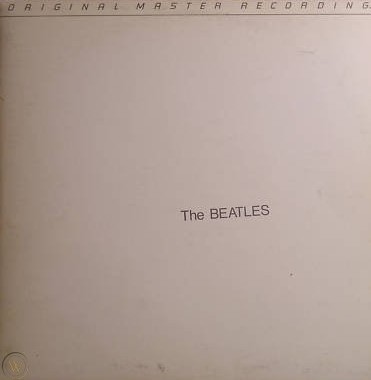 An interesting US vinyl edition of the “White Album” was released on January 7th, 1982, this being manufactured by Mobile Fidelity Sound Lab in Chatsworth, California as part of their "Original Master Recording" series. Their practice was to prepare a new master utilizing half-speed mastering technology from the original master tapes, in this case using the leased sub-master from Capitol Records. This release, which sounded superior to to all previous British and American pressings, was packaged in a non-embossed unnumbered cover that did not include the usual poster/lyric sheet or individual Beatles portraits as contained in standard releases. Nonetheless, this excellent edition of the album was only available for a short time and is quite collectible today. An interesting US vinyl edition of the “White Album” was released on January 7th, 1982, this being manufactured by Mobile Fidelity Sound Lab in Chatsworth, California as part of their "Original Master Recording" series. Their practice was to prepare a new master utilizing half-speed mastering technology from the original master tapes, in this case using the leased sub-master from Capitol Records. This release, which sounded superior to to all previous British and American pressings, was packaged in a non-embossed unnumbered cover that did not include the usual poster/lyric sheet or individual Beatles portraits as contained in standard releases. Nonetheless, this excellent edition of the album was only available for a short time and is quite collectible today.
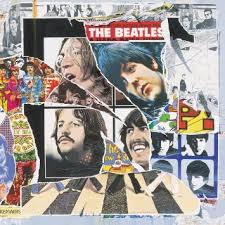 On October 28th, 1996, “Honey Pie” was the last of the "Kinfauns" demo recordings to be included on the compilation album “Anthology 3.” As explained above, this demo was edited down, the third verse and second bridge taken out entirely. On October 28th, 1996, “Honey Pie” was the last of the "Kinfauns" demo recordings to be included on the compilation album “Anthology 3.” As explained above, this demo was edited down, the third verse and second bridge taken out entirely.
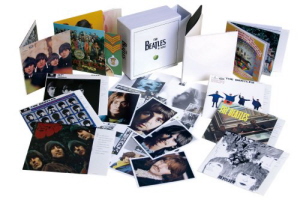 The entire mono Beatles catalog was first released on September 9th, 2009 in the CD box set entitled “The Beatles In Mono,” which included the first official US release of the mono “White Album,” “Honey Pie” being included therein. The vinyl edition of this box set was first released on September 9th, 2014. The entire mono Beatles catalog was first released on September 9th, 2009 in the CD box set entitled “The Beatles In Mono,” which included the first official US release of the mono “White Album,” “Honey Pie” being included therein. The vinyl edition of this box set was first released on September 9th, 2014.
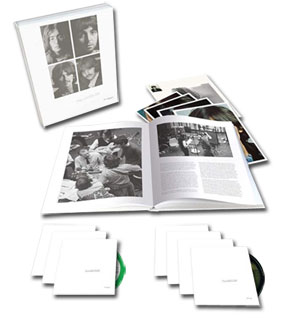 Various editions of the "White Album" were released on November 9th, 2018 to commemorate the 50th Anniversary of its original release. The "Deluxe" edition, which was made available in a 3CD set and a limited edition 180-gram 4LP vinyl set, contained the newly created Giles Martin mix of the "White Album" as well as the complete set of Esher demos that The Beatles recorded in late May of 1968. The "Super Deluxe" 6CD + 1Blu-ray edition also contains the master tape of "Honey Pie" with Paul's lead vocal faded out, which makes for an interesting instrumental version of the song. Various editions of the "White Album" were released on November 9th, 2018 to commemorate the 50th Anniversary of its original release. The "Deluxe" edition, which was made available in a 3CD set and a limited edition 180-gram 4LP vinyl set, contained the newly created Giles Martin mix of the "White Album" as well as the complete set of Esher demos that The Beatles recorded in late May of 1968. The "Super Deluxe" 6CD + 1Blu-ray edition also contains the master tape of "Honey Pie" with Paul's lead vocal faded out, which makes for an interesting instrumental version of the song.
Live Performances
“Honey Pie” has never graced a concert stage, either by The Beatles or Paul.
Conclusion
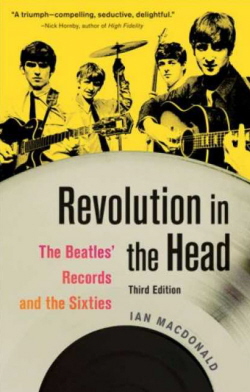 While most listeners and writers dismiss “Honey Pie” as inconsequential padding on an otherwise masterful album, Paul's objective at creating a time-period pastiche was never more spot-on. In the book “Revolution In The Head,” for instance, Ian MacDonald describes the song as having “a catchy tune, the correct period harmonic design, and all the proper passing chords,” then crediting George Martin for his obvious hand in helping Paul with his vision. While most listeners and writers dismiss “Honey Pie” as inconsequential padding on an otherwise masterful album, Paul's objective at creating a time-period pastiche was never more spot-on. In the book “Revolution In The Head,” for instance, Ian MacDonald describes the song as having “a catchy tune, the correct period harmonic design, and all the proper passing chords,” then crediting George Martin for his obvious hand in helping Paul with his vision.
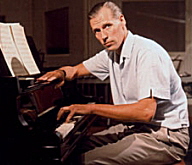 When speculating what would have been included on the “White Album” had it been reduced to a single disc, as had been considered by George Martin at the time, this track is overwhelmingly relegated to the dust bin by fans and critics alike. This fact alone puts “Honey Pie” in the category of “most underrated Beatles songs,” despite all the hard work and craftsmanship put into it. Sad really, but nobody seems to be mourning the situation. Maybe someday day all of that effort will be appreciated. When speculating what would have been included on the “White Album” had it been reduced to a single disc, as had been considered by George Martin at the time, this track is overwhelmingly relegated to the dust bin by fans and critics alike. This fact alone puts “Honey Pie” in the category of “most underrated Beatles songs,” despite all the hard work and craftsmanship put into it. Sad really, but nobody seems to be mourning the situation. Maybe someday day all of that effort will be appreciated.
Song Summary
"Honey Pie"
Written by: John Lennon / Paul McCartney
- Song Written: March - October, 1968
- Song Recorded: October 1, 2 and 4, 1968
- First US Release Date: November 25, 1968
- First US Album Release: Apple #SWBO-101 “The Beatles”
- US Single Release: n/a
- Highest Chart Position: n/a
- British Album Release: Apple #PCS 7067-7068 “The Beatles”
- Length: 2:42
- Key: G major
- Producer: George Martin
- Engineer: Barry Sheffield
Instrumentation (most likely):
- Paul McCartney - Lead Vocals, Piano (Bechstein Grand #44064)
- John Lennon - Lead Guitar (1965 Epiphone ES-230TD Casino)
- George Harrison - Bass (1961 Fender Bass VI)
- Ringo Starr - Drums (1964 Ludwig Super Classic Black Oyster Pearl)
- Dennis Walton - saxophone
- Ronald Chamberlain - saxophone
- Jim Chester - saxophone
- Rex Morris - saxophone
- Harry Klein - saxophone
- Raymond Newman - clarinet
- David Smith - clarinet
Written and compiled by Dave Rybaczewski
|
IF YOU WOULD LIKE TO MAKE A DONATION TO KEEP THIS WEBSITE UP AND RUNNING, PLEASE CLICK BELOW!
Sign Up Below for our MONTHLY BEATLES TRIVIA QUIZ!
|